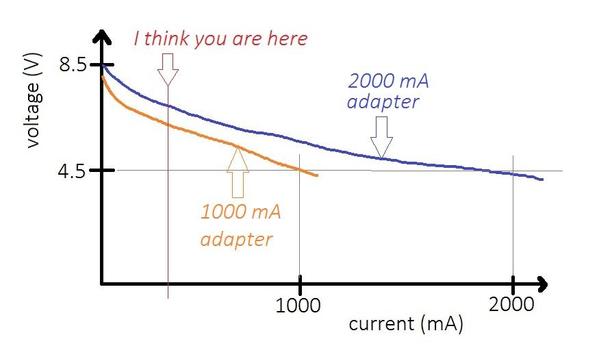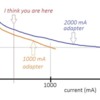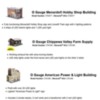I'm still curious on the voltage drop of the Menards 4006 adapter as you add buildings. Before you go cutting wires and making terminal strips or whatever, do the supplied 1-to-3 way cable separate? If so, what kind of connectors are used?
You said you have 4 of these 3-output adapters? If it comes apart at the arrow and has the "right" connector arrangement, I'm thinking you can take the 1-to-3 way splitter cabling from an unused adapter and attach it to one plug of the powered adapter. You now have a 5-output adapter...2 plugs with original length, 3 plugs with essentially double-length. Now you can measure the voltage with 1,2,3,4 buildings attached.
There are also all kinds of splitter cables available that you could attach to one of the 4006 outputs and make it into 2,3,4,etc. outputs. And even extension cables.
So if indeed your buildings are "low power" and you can operate more than 3 per adapter, using some combination of inexpensive splitter and extension cables is an option. Cutting wires, splicing connections, possibly soldering, etc. can be a tedious affair.
If you are going to mess with the HO transformer, a screw-terminal adapter like this can come in handy...possibly in conjunction with a splitter-cable.
I see there are a few other threads on this issue. Has anyone received a reply yet from Menards that clarifies the technical specs of the adapter and their buildings? For example, the Woodland Scenics buildings I've seen state the current requirements for their buildings (50 mA, 80 mA, etc.). Obviously this goes a long way toward choosing a suitable power source. If you have 3 buildings each having only have a few LEDs in them, it does seem odd that Menards' suggested solution is a 3-output 2000mA adapter (unregulated).























